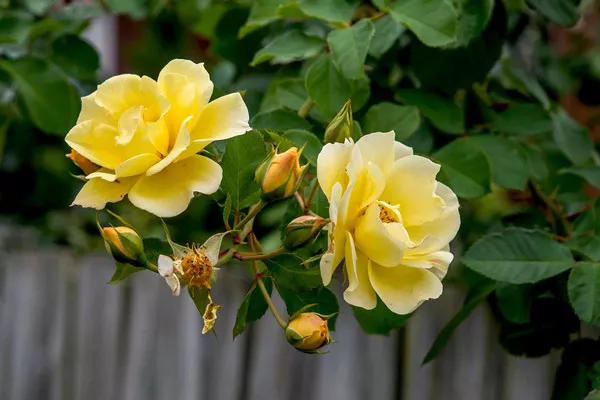Roses, with their delicate petals and enchanting fragrance, are a beloved addition to any garden. However, the presence of Japanese beetles can quickly turn a thriving rose garden into a battleground. These invasive pests are notorious for devouring the foliage and blossoms of roses, leaving behind a trail of destruction. Fortunately, with the right strategies in place, you can effectively manage Japanese beetles and safeguard your roses. In this article, we will explore various methods for controlling Japanese beetles and restoring the beauty of your rose garden.
Understanding Japanese Beetles
Before delving into control methods, it’s essential to understand the lifecycle and behavior of Japanese beetles. These metallic-green insects are native to Japan and were first discovered in the United States over a century ago. Since then, they have spread across much of North America, causing damage to a wide range of ornamental plants, including roses.
Japanese beetles undergo complete metamorphosis, starting as eggs laid in the soil during mid-summer. These eggs hatch into larvae, commonly known as grubs, which feed on grassroots throughout the fall and winter months. In spring, the grubs pupate and emerge as adult beetles, typically around late June or early July. It’s during this adult stage that Japanese beetles wreak havoc on roses and other plants, feeding voraciously on leaves and flowers.
Cultural Control Methods
1. Handpicking: While it may seem labor-intensive, handpicking Japanese beetles can be an effective control method, especially in smaller gardens. Simply fill a bucket with soapy water and knock the beetles off the plants directly into the solution. Repeat this process daily, particularly during the peak feeding times of early morning and late afternoon.
2. Companion Planting: Certain plants, such as garlic, chives, and rue, are believed to repel Japanese beetles due to their strong odor. Consider interplanting these repellent species among your roses to discourage beetle infestations.
3. Selective Planting: Japanese beetles are attracted to some plants more than others. By strategically choosing companion plants that are less appealing to beetles, you can help divert their attention away from your roses. Some less preferred plants include boxwood, lilac, and marigolds.
Biological Control
1. Nematodes: Beneficial nematodes are microscopic organisms that prey on Japanese beetle larvae in the soil. Applying nematodes to your garden can help reduce the population of grubs, ultimately leading to fewer adult beetles emerging in the summer months. Follow the instructions carefully when applying nematodes, as proper timing and soil conditions are crucial for success.
2. Milky Spore Disease: Milky spore is a naturally occurring bacterium that infects and kills Japanese beetle grubs. Once applied to the soil, milky spore multiplies and persists for several years, providing long-term control of grub populations. While it may take time to establish, milky spore can be an effective biological control method for managing Japanese beetles in the lawn and garden.
Chemical Control
1. Insecticidal Soap: Insecticidal soaps are a low-toxicity option for controlling Japanese beetles on roses. These soap-based sprays work by suffocating the beetles upon contact, making them an ideal choice for spot treatments on infested plants. Be sure to follow the manufacturer’s instructions for proper application and safety precautions.
2. Pyrethroid Insecticides: Synthetic pyrethroid insecticides, such as permethrin and bifenthrin, are commonly used to control Japanese beetles in residential landscapes. These chemical pesticides provide rapid knockdown of adult beetles and offer residual protection against future infestations. Exercise caution when using pyrethroid insecticides, as they can be harmful to beneficial insects and other non-target organisms.
Integrated Pest Management (IPM)
Integrated Pest Management (IPM) combines multiple control strategies to effectively manage pest populations while minimizing environmental impact. When implementing IPM for Japanese beetle control in rose gardens, consider the following approach:
1. Monitor: Regularly inspect your roses for signs of Japanese beetle activity, including skeletonized leaves and clustered beetles feeding on flowers. Early detection allows for timely intervention and prevents widespread damage.
2. Cultural Controls: Implement cultural practices, such as handpicking and companion planting, to reduce Japanese beetle populations and minimize the need for chemical interventions.
3. Biological Controls: Introduce beneficial organisms, such as nematodes and milky spore, to target Japanese beetle larvae in the soil and disrupt their lifecycle.
4. Chemical Controls: As a last resort, use targeted insecticides to suppress adult beetle populations when other control methods are insufficient.
Conclusion
By incorporating these strategies into your rose care routine, you can effectively manage Japanese beetles and protect the beauty of your garden. Remember to prioritize environmentally friendly methods whenever possible and strive for a balanced approach to pest management. With diligence and perseverance, you can enjoy a thriving rose garden free from the ravages of Japanese beetles.


